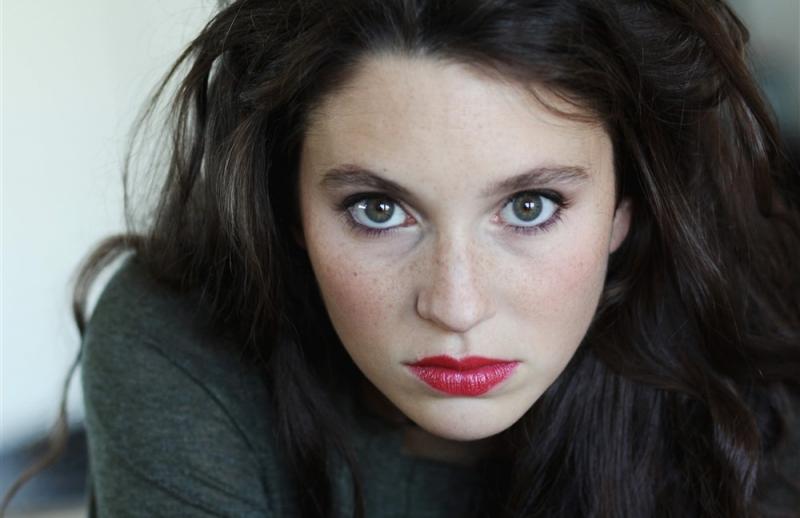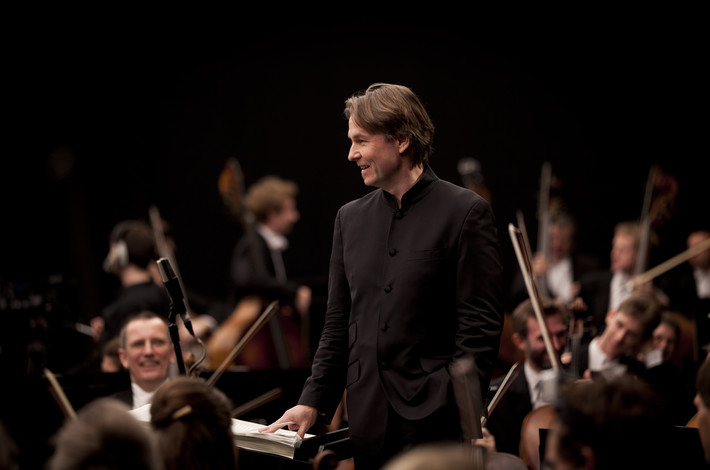Stravinsky: Myths and Rituals 4, Philharmonia, Salonen, RFH | reviews, news & interviews
Stravinsky: Myths and Rituals 4, Philharmonia, Salonen, RFH
Stravinsky: Myths and Rituals 4, Philharmonia, Salonen, RFH
Three Greek-inspired masterpieces in perfect equilibrium

Stravinsky's music, chameleonic yet always itself, offers so many lines of thought. One struck me immediately with the descending, even harp notes and tender, veiled strings at the start of his 1947 ballet Orpheus last night: the inexorable beat of time is so often pitted against an expressive, human voice. Esa-Pekka Salonen, who started out as a rhythm and textures man, now gets the humanity too.
It’s the joy of all-Stravinsky programmes – and this is the fourth major event in an ambitious 2016 festival – that so many alternative groupings are possible. The final work of last night’s “Myths” could have been the last ballet, Agon (already featured) or Oedipus Rex (to come on Thursday). That it was a sometimes overshadowed masterpiece, Perséphone, no doubt made for the best transcendence of all. Both Orpheus and Apollon musagète have their apotheoses, cool and ultimately a bit troubling; though Perséphone ends with a similar question mark, its Part Three Rite of Spring, with a tear-jerking khorovod (round dance) for celebrants of the Eleusinian mysteries followed by a blaze of triadic light was certainly the emotional high-point of the evening.

Each work had them, in terms of energy and volume: Salonen (pictured above by Benjamin Ealovega) upped the stakes in the racy Coda for Apollo and the Muses in Stravinsky’s first collaboration with equal genius Balanchine, and for the Maenads tearing bereaved song-master Orpheus limb from limb. Such great blazes were all the more bracing for the exquisite understatement Salonen applied to their contexts. Again the highlights, thanks to Stravinsky’s often undervalued gift for original and unexpected melody, were obvious.
The core of Orpheus is his dance-song for Hades’ tormented inhabitants, a homage to Bach’s cantatas and passions which is typically spare – perhaps the reprise shared between Jill Crowther’s cor anglais and harpist Heidi Krutzen, the dominant colourist of the work, was even more ineffable than the initial duet for two oboes – and the brief string light of Orpheus’ Pas de deux with Eurydice (you may well ask how he dances with her if he’s leading her away from Hades and not looking back; the answer is that Balanchine has him blindfold). Apollo’s cooler duet with Terpsichore was rendered magical by the varied cello refrains, so poised, and in Perséphone the professional Philharmonia Voices made coolly ravishing work both of Euridice’s pastel companions and of the simple chorus of shades (Stravinsky called it “Lullaby for Vera”, his adored second wife).

Word music brought a bigger dimension to the last work, not just from the chorus, joined by Tiffin Boys in the enchating final ritual, and from clarion tenor Andrew Staples (pictured above), almost Mephistophelian or Quint-like as ritual guide Eumolpus guides Perséphone into darker corners, but above all from the melodrama-recitation of Pauline Cheviller. When have you ever seen a concert Perséphone where the heroine is young and beautiful – Ida Rubinstein was certainly not the former when she recited at the premiere - and acts out every emotion even when she’s not singing? Score-free – she has sung the role in Peter Sellars’ production – Cheviller made you feel from the start the apartness and the special quality of Perséphone’s compassion which takes her to the underworld. She wrought magic from what Stravinsky called André Gide's "caramel" verses. If she had to be miked, so be it, to catch the finer nuances (the final world of love to her consort on earth, Triptolemus, was unforgettable).
Sonically, no voice or instrument had a strand wrong or out of place; visually, the supporting pleasure was just as classy. Salonen has long espoused supertitles for dance movements – such a help, for example, in Bartok’s The Miraculous Mandarin. Here they were complemented by the poetic lighting of Sellars’ collaborator Seth Reiser. He gave us shades of darkness for Orpheus, golden light for Apollo’s brightest moments and even a pomegranate hue in a differently-lit Persephone. The imagination was fired but not overwhelmed by the total works of art. Maybe there’s no substitute for Balanchine’s ineffable choreographies, but here everything supported a rare musical perfection. Don't miss Oedipus Rex on Thursday, with the same light-feast promised, and Cheviller as narrator.
- Final concert in Stravinsky: Myths and Rituals on Thursday 29 September
- Concert to be broadcast by BBC Radio 3 tonight (Monday 26 September)
- David Nice is the author of a 100-page essay accompanying Naxos's Stravinsky: A Portrait
rating
Explore topics
Share this article
The future of Arts Journalism
You can stop theartsdesk.com closing!
We urgently need financing to survive. Our fundraising drive has thus far raised £49,000 but we need to reach £100,000 or we will be forced to close. Please contribute here: https://gofund.me/c3f6033d
And if you can forward this information to anyone who might assist, we’d be grateful.

Subscribe to theartsdesk.com
Thank you for continuing to read our work on theartsdesk.com. For unlimited access to every article in its entirety, including our archive of more than 15,000 pieces, we're asking for £5 per month or £40 per year. We feel it's a very good deal, and hope you do too.
To take a subscription now simply click here.
And if you're looking for that extra gift for a friend or family member, why not treat them to a theartsdesk.com gift subscription?
more Classical music
 First Person: Manchester Camerata's Head of Artistic Planning Clara Marshall Cawley on questioning the status quo
Five days of free events with all sorts of audiences around Manchester starts tomorrow
First Person: Manchester Camerata's Head of Artistic Planning Clara Marshall Cawley on questioning the status quo
Five days of free events with all sorts of audiences around Manchester starts tomorrow
 Goldscheider, Brother Tree Sound, Kings Place review - music of hope from a young composer
Unusual combination of horn, strings and electronics makes for some intriguing listening
Goldscheider, Brother Tree Sound, Kings Place review - music of hope from a young composer
Unusual combination of horn, strings and electronics makes for some intriguing listening
 theartsdesk Q&A: composer Donghoon Shin on his new concerto for pianist Seong-Jin Cho
Classical music makes its debut at London's K-Music Festival
theartsdesk Q&A: composer Donghoon Shin on his new concerto for pianist Seong-Jin Cho
Classical music makes its debut at London's K-Music Festival
 Helleur-Simcock, Hallé, Wong, Bridgewater Hall, Manchester review - moving lyricism in Elgar’s concerto
Season opener brings lyrical beauty, crisp confidence and a proper Romantic wallow
Helleur-Simcock, Hallé, Wong, Bridgewater Hall, Manchester review - moving lyricism in Elgar’s concerto
Season opener brings lyrical beauty, crisp confidence and a proper Romantic wallow
 Kohout, Spence, Braun, Manchester Camerata, Huth, RNCM, Manchester review - joy, insight, imagination and unanimity
Celebration of the past with stars of the future at the Royal Northern College
Kohout, Spence, Braun, Manchester Camerata, Huth, RNCM, Manchester review - joy, insight, imagination and unanimity
Celebration of the past with stars of the future at the Royal Northern College
 Jansen, LSO, Pappano, Barbican review - profound and bracing emotional workouts
Great soloist, conductor and orchestra take Britten and Shostakovich to the edge
Jansen, LSO, Pappano, Barbican review - profound and bracing emotional workouts
Great soloist, conductor and orchestra take Britten and Shostakovich to the edge
 Jakub Hrůša and Friends in Concert, Royal Opera review - fleshcreep in two uneven halves
Bartók kept short, and a sprawling Dvořák choral ballad done as well as it could be
Jakub Hrůša and Friends in Concert, Royal Opera review - fleshcreep in two uneven halves
Bartók kept short, and a sprawling Dvořák choral ballad done as well as it could be
 Hadelich, BBC Philharmonic, Storgårds, Bridgewater Hall, Manchester review - youth, fate and pain
Prokofiev in the hands of a fine violinist has surely never sounded better
Hadelich, BBC Philharmonic, Storgårds, Bridgewater Hall, Manchester review - youth, fate and pain
Prokofiev in the hands of a fine violinist has surely never sounded better
 Monteverdi Choir, ORR, Heras-Casado, St Martin-in-the-Fields review - flames of joy and sorrow
First-rate soloists, choir and orchestra unite in a blazing Mozart Requiem
Monteverdi Choir, ORR, Heras-Casado, St Martin-in-the-Fields review - flames of joy and sorrow
First-rate soloists, choir and orchestra unite in a blazing Mozart Requiem
 Cho, LSO, Pappano, Barbican review - finely-focused stormy weather
Chameleonic Seong-Jin Cho is a match for the fine-tuning of the LSO’s Chief Conductor
Cho, LSO, Pappano, Barbican review - finely-focused stormy weather
Chameleonic Seong-Jin Cho is a match for the fine-tuning of the LSO’s Chief Conductor
 Classical CDs: Shrouds, silhouettes and superstition
Cello concertos, choral collections and a stunning tribute to a contemporary giant
Classical CDs: Shrouds, silhouettes and superstition
Cello concertos, choral collections and a stunning tribute to a contemporary giant
 Appl, Levickis, Wigmore Hall review - fun to the fore in cabaret and show songs
A relaxed evening of light-hearted fare, with the accordion offering unusual colours
Appl, Levickis, Wigmore Hall review - fun to the fore in cabaret and show songs
A relaxed evening of light-hearted fare, with the accordion offering unusual colours

Add comment